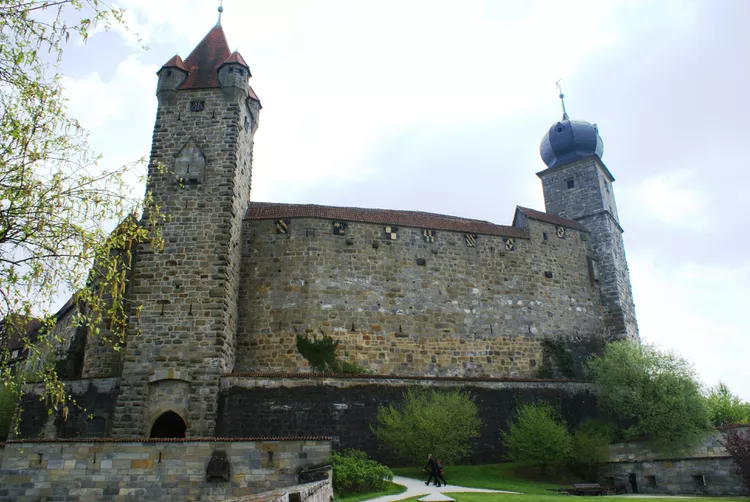The town of Coburg in Upper Franconia, Bavaria — about 100 km north of Nuremberg — is located on the Itz River, with its epic fortress towering above the small village center. Known as Veste Coburg, it stands as one of the largest surviving medieval fortresses in Germany, offering panoramic views of the countryside. The castle is an impressive structure fortified with three layers of defensive walls and numerous watchtowers. Moreover, it serves as a military masterpiece, an art gallery, and a historical attraction, having been a refuge for the German icon, Martin Luther.
History of Coburg Castle
The earliest documented mention dates back to 1056, with the oldest existing part being the Blauer Turm (Blue Tower), constructed in 1230. A fire later ravaged much of the original structures, but significant rebuilding took place in 1499, allowing the fortress to expand due to its strategic importance. Consequently, it evolved into one of the largest castle complexes in Germany, retaining much of its medieval architecture.
In 1530, Martin Luther, an outlaw of the Holy Roman Empire, took refuge in Veste Coburg (similar to Wartburg Castle). During the Diet of Augsburg, which lasted roughly five and a half months, he diligently continued his translation of the Bible. Visitors can find memorabilia celebrating his stay at the castle.
The well-preserved appearance of the castle can be attributed to extensive renovations carried out throughout the 19th and 20th centuries. Until recently, descendants of local dukes resided within the castle, but with their departure, renovations are underway to open further sections for tours.
What to See at Coburg Fortress
Visitors are encouraged to explore the castle grounds and enjoy the breathtaking views. During one visit, medieval musicians provided entertainment as guests relished the beautiful spring weather. Inside the castle, guests can access three museums dedicated to armories, art, and various exhibitions.
- Steinerne Kemenate (“Heated Stone Chamber”) – The Lutherstube (Luther Room) is located on the east side of the left-hand courtyard, named after its most famous guest, Martin Luther.
- Memorial Room – Features portraits of Electors Frederick the Wise and John the Steadfast by Cranach the Elder, alongside a portrait of Luther by Cranach the Younger.
- Lutherkapelle – A 19th-century chapel adjacent to its earlier Romanesque structure.
- Bear Enclosures – Located in the left-hand courtyard, one of the former enclosures now showcases a stuffed bear.
Additionally, visitors can admire collections of copper engravings, hunting weapons, carriages, sleighs, and works by notable artists such as Durer, Cranach, and Rembrandt.
Coburg Castle Information
Due to its elevated location, accessing the castle is best accomplished via public transport or by private vehicle. Coburg’s SÜC operates a bus network consisting of 22 lines.
For travelers arriving by car, following the signs for Veste Coburg leads to a parking area situated just below the castle.
For current opening hours, please visit the castle’s website and consider stopping by the castle’s restaurant, “Burgshänke.”





